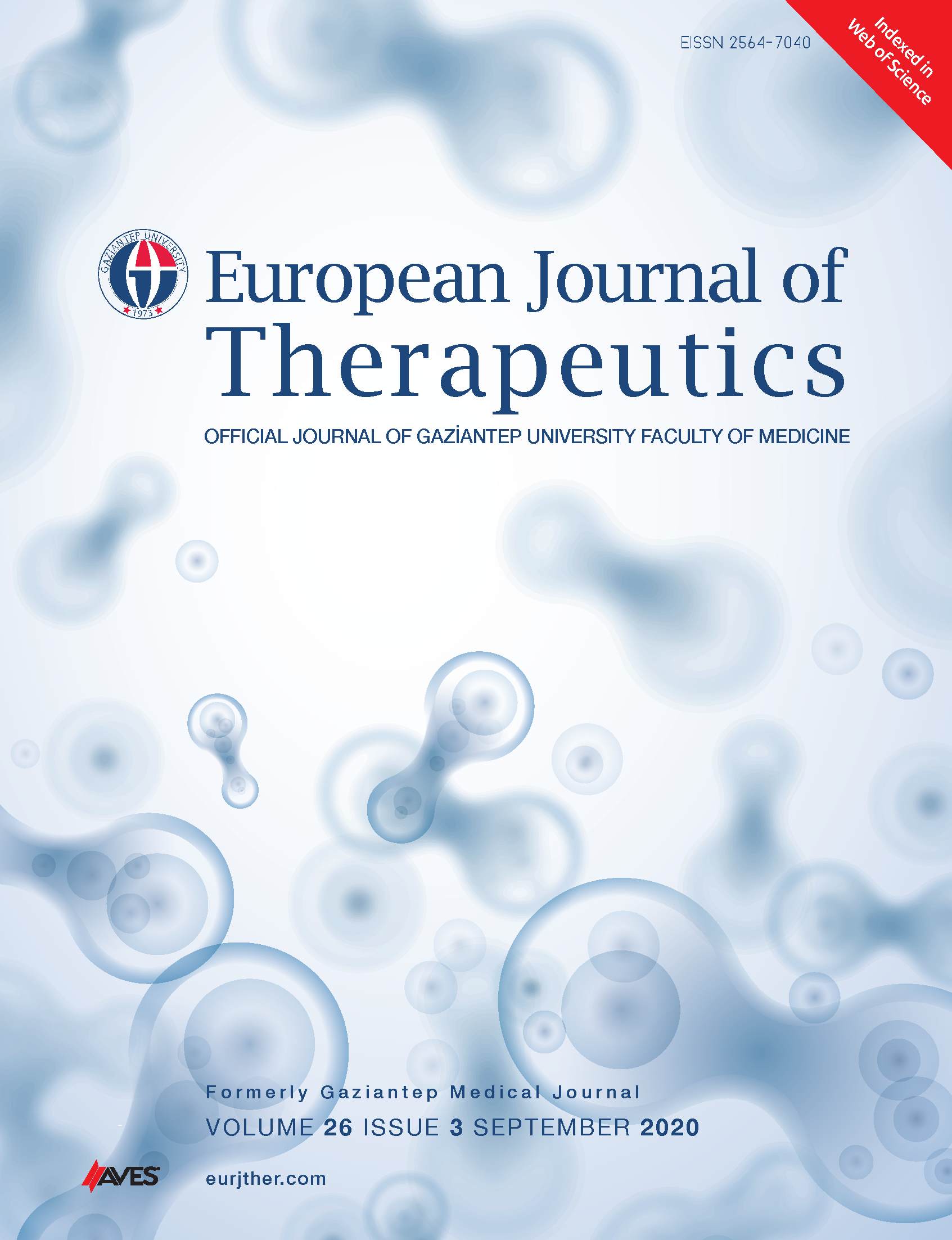Evaluation of the Demographic and Clinical Features of Skin Cancers: A Single-Center Experience
DOI:
https://doi.org/10.5152/eurjther.2020.20016Keywords:
Basal cell carcinoma, malignant melanoma, squamous cell carcinomaAbstract
Objective: This study aimed to present the clinical and demographic features of patients who underwent skin cancer surgery at our center during the last 10 years. Localization, age, sex, and subtype mapping of head and neck cancers were particularly evaluated.
Methods: A retrospective evaluation was conducted of the patient data recorded over the last 10 years in the information processing system of our institute. Age, sex, tumor localization, and subtype, if indicated, were recorded.
Results: The data of 455 patients were obtained from the our hospital archive scan. Of these, 342 (75.1%) patients had basal cell carcinoma (BCC), 99 (21.8%) had squamous cell carcinoma (SCC), 6 (1.3%) had basosquamous cell carcinoma (BSCC), and 8 (1.8%) had malignant melanoma (MM). BCC was most commonly found in men (M/F: 175/167) and the nasal region. SCC was seen more frequently in men (M/F: 52/47) and the cheeks. BSCC was most common on the cheek (3 patients, 50%) and MM (4 patients, 50%) on the scalp.
Conclusion: There are very few epidemiological studies on skin cancers throughout the world and especially in Turkey. This study showed that SCC was more common in men and located on the cheek, whereas MM was found to be more common on the scalp. Residents of the Çukurova region, an eastern Mediterranean region, are exposed to high levels of sunlight. We believe that the difference in demographic and clinical features of skin cancers in this region may be due to this.
Metrics
References
Fahradyan A, Howell AC, Wolfswinkel EM, Tsuha M, Sheth P, Wong AK. Updates on the management of non-melanoma skin cancer (NMSC). Healthcare (Basel) 2017; 5: 82.
Lear W, Dahlke E, Murray CA. Basal cell carcinoma: review of epidemiology, pathogenesis, and associated risk factors. J Cutan Med Surg 2007; 11: 19-30.
Lomas A, Leonardi‐Bee J, Bath‐Hextall F. A systematic review of worldwide incidence of nonmelanoma skin cancer. Br J Dermatol 2012; 166: 1069-80.
Barton V, Armeson K, Hampras S, Ferris LK, Visvanathan K, Rollison D, et al. Nonmelanoma skin cancer and risk of allcause and cancer-related mortality: a systematic review. Arch Dermatol Res 2017; 309: 243-51.
Findik S, Uyanik O, Altuntas M, Altuntas Z. Epidemiological and localization characteristics of non-melanoma skin cancers: Retrospective analysis of 400 cases. Turk J Plast Surg 2019; 27: 19.
Rigel DS. Cutaneous ultraviolet exposure and its relationship to the development of skin cancer. J Am Acad Dermatol 2008; 58: S129-S32.
Kasap S, Pektaş M, Dere Y, Altıparmak M. Retrospective Evaluation of Skin Cancer Patients in Muğla. Medical Journal of Muğla Sıtkı Koçman University 2015; 2: 34-7.
Elwood JM, Jopson J. Melanoma and sun exposure: an overview of published studies. International Journal of Cancer 1997; 73: 198-203.
Baykal C, Ergun T, Kavak A. Dermatoloji polikliniklerinin 5 yıllık malign melanom olgularının değerlendirilmesi. Türkderm 1996; 30: 190-6.
Downloads
Published
How to Cite
Issue
Section
License
Copyright (c) 2023 European Journal of Therapeutics

This work is licensed under a Creative Commons Attribution-NonCommercial 4.0 International License.
The content of this journal is licensed under a Creative Commons Attribution-NonCommercial 4.0 International License.


















